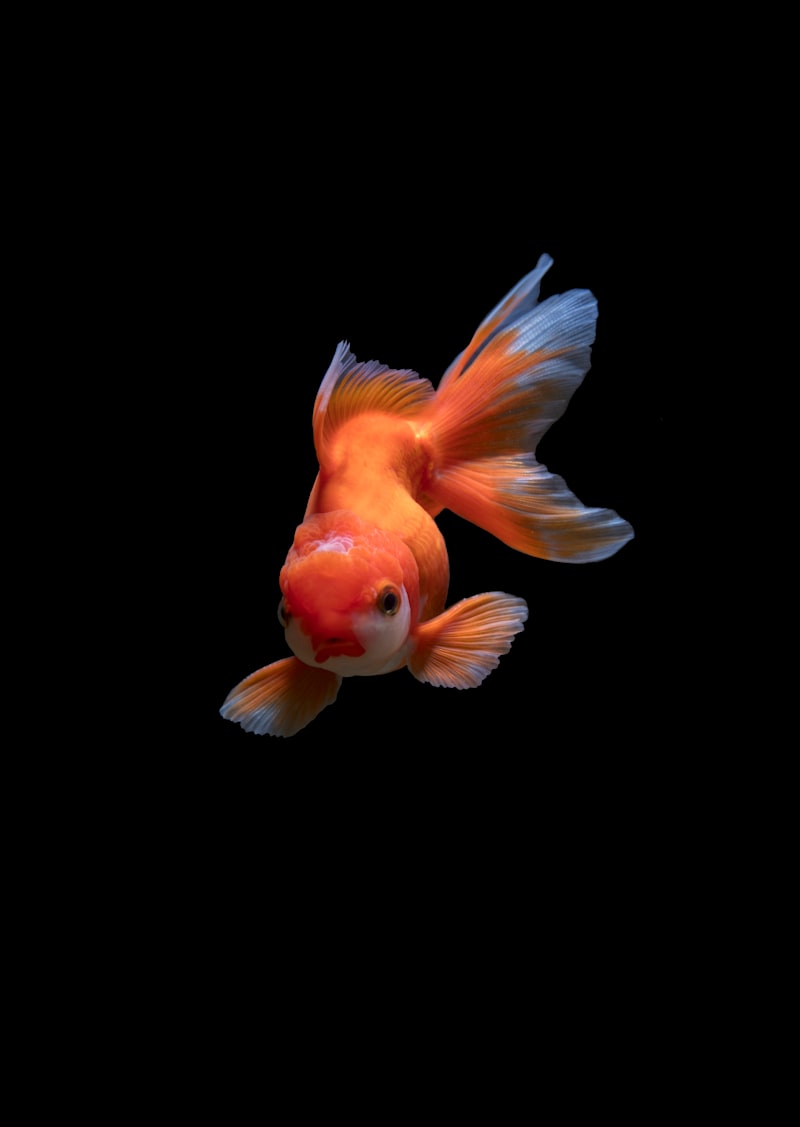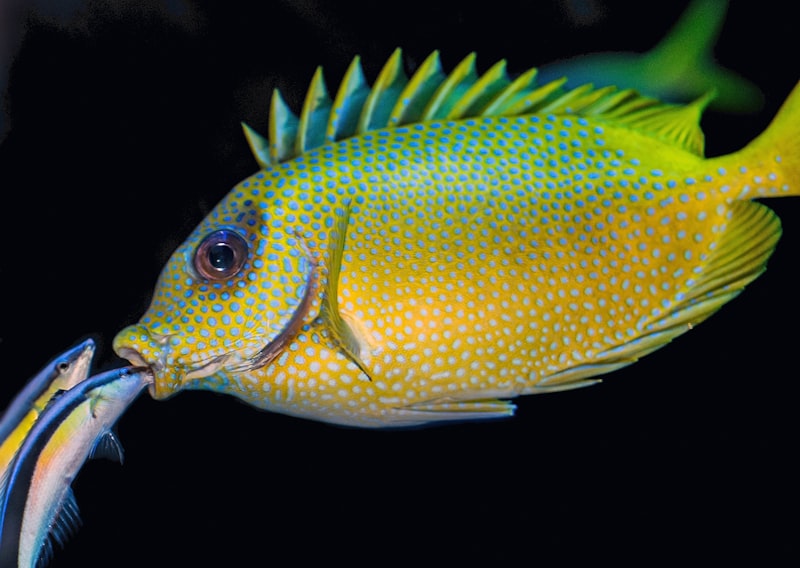Have you ever wondered how fish populations thrive and fluctuate in our oceans and freshwater bodies? Understanding the population dynamics of fish species is like unraveling a fascinating mystery of nature. It involves studying how factors like birth rates, death rates, and migration impact the size and health of fish populations over time.
Imagine a bustling underwater city where each fish plays a crucial role in maintaining the balance of life. Just like in any city, there are births and deaths happening constantly. Birth rates refer to the number of new fish being born into the population, while death rates account for those that pass away due to natural causes, predation, or other factors.
Migration adds another layer of complexity to these dynamics. Fish often move between different habitats throughout their lives, seeking food, breeding grounds, or suitable temperatures. This movement influences not only the local population but also connects different ecosystems, making fish populations resilient and interconnected.
For fisheries managers and conservationists, understanding these dynamics is essential for sustainable management practices. By monitoring population trends, they can determine if a fish stock is healthy or at risk of depletion. Sustainable fishing practices ensure that we can enjoy seafood today without compromising future generations’ ability to do the same.
Moreover, environmental factors such as climate change and habitat destruction also play significant roles in shaping fish populations. Changes in temperature or water quality can affect fish reproduction and survival rates, highlighting the delicate balance between natural processes and human activities.
The study of population dynamics in fish species is a testament to the intricacies of our natural world. It underscores the importance of conservation efforts and responsible management to preserve these aquatic ecosystems for generations to come.
Unraveling the Mystery: Fluctuations in Fish Populations Explained
Have you ever wondered why fish populations in our oceans seem to rise and fall unpredictably? The ebb and flow of marine life can seem like a mysterious dance, influenced by a multitude of factors beneath the surface.
One of the key drivers of these fluctuations is environmental change. As our planet warms, ocean temperatures shift, disrupting the delicate balance of ecosystems where fish thrive. Species that prefer cooler waters may find themselves displaced or facing increased competition from others that adapt more readily.
Human activity also plays a significant role. Overfishing, for example, can decimate fish populations, causing ripple effects throughout the food chain. When certain species are depleted, predators may struggle to find enough food, leading to further imbalances. Pollution further complicates matters, poisoning habitats and harming fish directly.
Yet, nature isn’t solely to blame. Fish populations can also exhibit natural cycles of boom and bust, influenced by factors like food availability and breeding success. Some species are known for their boom years, when conditions align perfectly for rapid growth and reproduction. Other times, environmental stressors or natural predators can trigger a decline.
Understanding these dynamics is crucial for managing fisheries sustainably. Conservation efforts often focus on protecting critical habitats, regulating fishing quotas, and promoting responsible practices that minimize harm to marine life. By safeguarding breeding grounds and limiting our impact, we can help ensure that fish populations have a fighting chance to recover and thrive.
The fluctuations in fish populations are a complex tapestry woven from environmental changes, human actions, and natural rhythms. Each thread contributes to the intricate pattern we observe in our oceans. By unraveling these mysteries and taking proactive steps to protect our marine ecosystems, we can preserve the diversity and abundance of fish for generations to come.
From Boom to Bust: Understanding Population Crashes in Marine Fish
Imagine a bustling underwater world where marine fish thrive in their vibrant communities, each species playing a crucial role in the delicate balance of the ocean ecosystem. This thriving population, however, is not immune to dramatic shifts that can lead from boom to bust in a matter of years.
The phenomenon of population crashes among marine fish species is a stark reality that researchers and conservationists have been grappling with for decades. These crashes, often triggered by a complex interplay of environmental, biological, and human factors, can decimate once-abundant populations with alarming speed.

One of the primary culprits behind these crashes is overfishing. When fish stocks are harvested at unsustainable rates, it disrupts the natural balance of predator-prey relationships and reproductive cycles within fish populations. As a result, populations that once flourished can plummet rapidly, unable to replenish themselves quickly enough to sustain their numbers.
Environmental factors also play a pivotal role. Ocean warming, acidification, and pollution alter marine habitats, making them less hospitable for certain species. For example, rising sea temperatures can force fish to migrate to cooler waters, disrupting their natural feeding and breeding grounds. This disruption can weaken populations already stressed by other factors, further contributing to crashes.

Biological factors, such as disease outbreaks or genetic issues within populations, can exacerbate the vulnerability of marine fish to crashes. Diseases can spread quickly in densely populated fish communities, leading to mass mortality events that can wipe out significant portions of a species’ population in a short period.
Human activities, including habitat destruction through coastal development and the alteration of marine ecosystems, also play a critical role in driving population crashes. Loss of essential breeding grounds, such as coral reefs and mangrove forests, can severely impact fish populations that rely on these habitats for survival.
Understanding the dynamics of population crashes in marine fish is crucial for implementing effective conservation measures. By addressing the root causes of these crashes, such as overfishing, habitat destruction, and environmental degradation, we can work towards preserving the diversity and abundance of marine life for future generations.
Survival of the Fittest: How Competition Shapes Fish Population Dynamics
Imagine a coral reef bustling with life, where every inch of space is contested territory. Fish dart and weave through the vibrant ecosystem, each one vying for food, shelter, and the chance to pass on their genes to the next generation. This constant struggle isn’t just about survival; it’s about thriving in a complex and ever-changing environment.
Competition among fish isn’t just a matter of brute strength or size; it’s a sophisticated dance of adaptation and strategy. Species evolve specialized traits—from streamlined bodies for swift swimming to camouflage that blends seamlessly with their surroundings—to gain an edge over competitors. Those that can secure resources efficiently are more likely to thrive, influencing population dynamics over time.
The impact of competition extends beyond individual fish. It shapes entire ecosystems by regulating population sizes and species distributions. In some cases, intense competition can lead to evolutionary changes, as fish develop new behaviors or physical characteristics to outcompete rivals. This dynamic process ensures that only the most well-adapted individuals—and species—persist in the long run, maintaining a delicate balance in the underwater world.
Consider a school of fish navigating a river’s current. Each member plays a crucial role in the group’s survival, from the leader forging ahead to the followers benefiting from reduced resistance. This analogy illustrates how competition, while often seen as a struggle, also fosters cooperation and mutual benefit among fish communities.
The intricate interplay of competition and adaptation is vital to understanding how fish populations thrive and evolve. By embracing the challenges of competition, fish ensure their place in the ecosystem’s intricate web of life, perpetuating a cycle of resilience and diversity that defines our underwater world.
Climate Chaos: How Global Warming Impacts Fish Population Stability
Have you ever wondered about the hidden consequences of global warming on our oceans? One of the lesser-known but profoundly impactful effects is its influence on fish populations worldwide. Let’s dive into how climate change disrupts the delicate balance of marine life.
Picture this: the ocean, a vast ecosystem where every species plays a crucial role. Fish, from the tiniest sardine to the majestic tuna, form intricate food webs that sustain life underwater. But as our planet warms, this intricate balance is under threat.
Warmer ocean temperatures directly affect fish habitats. Many fish species are highly sensitive to even slight changes in water temperature. As temperatures rise, their habitats either shift or diminish, forcing them to migrate to cooler waters or face extinction. This migration disrupts established fishing patterns and challenges the livelihoods of communities dependent on fishing.
Moreover, global warming alters ocean currents and nutrient availability, further complicating the situation. Fish rely on these currents to carry nutrients and larvae crucial for their survival. Disruptions in these currents lead to decreased food availability and fewer breeding grounds, directly impacting fish reproduction rates and population sizes.
Take coral reefs, for instance. These vibrant ecosystems are home to a quarter of all marine species, including fish. However, rising ocean temperatures cause coral bleaching, a phenomenon where corals expel the algae living in their tissues, turning them bone white and depriving nearby fish of food and shelter.
The consequences of dwindling fish populations are not just ecological but also economical. Fisheries around the globe face declines in catch sizes and struggle to maintain sustainable yields. This affects not only the livelihoods of fishermen but also the availability of fish as a food source for millions worldwide.
While the impacts of global warming on polar ice caps and weather patterns are widely discussed, its effects on fish populations are equally significant yet often overlooked. As our planet continues to warm, it’s imperative to understand these intricate connections within our oceans and take proactive measures to mitigate climate change’s adverse effects on fish and, ultimately, on ourselves.
The Ripple Effect: Ecosystem Changes and Fish Population Dynamics
At the heart of this interplay lies the concept of trophic cascades, where changes in one species can trigger a chain reaction across multiple levels of the food web. Take, for instance, the introduction of a new predator species into a freshwater ecosystem. Initially, this predator may cause a decline in prey populations, leading to a surge in vegetation levels as herbivore pressure eases. This surge in vegetation, in turn, affects nutrient cycling and alters habitat structure, creating new niches for other species to thrive or forcing others to adapt or relocate.
Conversely, disruptions in fish populations can stem from human activities such as overfishing or habitat destruction. When key species are depleted, it disrupts the balance within their food webs. For example, the decline of a top predator like sharks can lead to an increase in mesopredators, which then impacts smaller fish populations and disrupts their grazing patterns on algae. This disruption can lead to algal blooms that further alter water quality and reduce oxygen levels, affecting entire aquatic communities.
In coastal ecosystems, the health of fish populations is intricately linked to factors like water temperature, salinity, and nutrient availability. Changes in these environmental variables, often influenced by climate change or pollution, can directly impact fish physiology, reproduction rates, and migration patterns. For instance, rising water temperatures may force fish to seek cooler habitats, altering their seasonal behaviors and potentially exposing them to new predators or competitors.
Ultimately, the ripple effect of ecosystem changes on fish populations underscores the interconnectedness of nature’s web. By studying these dynamics, scientists can better predict and mitigate the impacts of human activities on aquatic biodiversity, ensuring healthier ecosystems for future generations.
Fish Stocks on the Rebound: Successful Conservation Efforts Rewarded
Imagine a world where our oceans teem with life, where every dive reveals a vibrant underwater ecosystem thriving with diversity. This vision is becoming a reality as fish stocks around the globe are making a remarkable comeback, thanks to dedicated conservation efforts. These initiatives, often led by passionate scientists and conservationists, are not just about protecting marine life but also ensuring sustainable fishing practices for future generations.
In recent years, the success stories of fish stock recoveries have been nothing short of inspiring. Take the case of the Atlantic bluefin tuna, once on the brink of collapse due to overfishing. Through strict quotas and international cooperation, their populations are now showing signs of recovery, a testament to what focused conservation efforts can achieve.
Similarly, closer to home, local communities are witnessing the resurgence of once-threatened species like the Pacific salmon. By restoring spawning grounds and implementing fishery management plans, these communities have not only revived fish populations but also revitalized their economies that depend on sustainable fishing practices.
Conservationists use a variety of methods to monitor and protect fish stocks. From satellite tracking of fishing vessels to underwater drones that survey marine habitats, technology plays a crucial role in ensuring that conservation efforts are effective and sustainable. These innovations help scientists gather data, enforce fishing regulations, and adapt strategies as needed to preserve fragile ecosystems.
As we celebrate these victories, it’s important to recognize that the road to restoring fish stocks is not without challenges. Climate change, pollution, and illegal fishing continue to threaten marine biodiversity. However, with continued dedication and international cooperation, we can build on these successes and ensure a future where our oceans thrive.
Frequently Asked Questions
How do environmental changes affect fish population dynamics?
This FAQ explores how environmental changes impact fish population dynamics. It covers the direct and indirect effects of factors like temperature, habitat loss, pollution, and overfishing on fish populations. The explanation focuses on understanding the interconnected relationship between environmental shifts and changes in fish populations.
What factors influence fish population growth and decline?
Discover the key factors affecting fish population dynamics, including environmental changes, fishing pressure, habitat degradation, and natural predation. Understand how these factors impact the growth and decline of fish populations.
What are the consequences of overfishing on fish populations?
Overfishing can lead to a decline in fish populations, disrupting ecosystems and reducing biodiversity. This can threaten food security, as well as the livelihoods of communities dependent on fishing. Conservation measures are crucial to sustain fish stocks and marine ecosystems.
What is the role of fishing pressure in fish population sustainability?
Learn about the impact of fishing pressure on fish population sustainability. This FAQ explores how fishing activities influence the size and health of fish populations in oceans, rivers, and lakes. Discover the critical balance needed to ensure sustainable fishing practices and the conservation of aquatic ecosystems.
How do scientists estimate fish population sizes?
Learn how scientists estimate fish population sizes using advanced sampling techniques and mathematical models. Discover the methods they employ, such as mark-recapture studies, acoustic surveys, and statistical analyses, to accurately assess fish populations in aquatic ecosystems.



